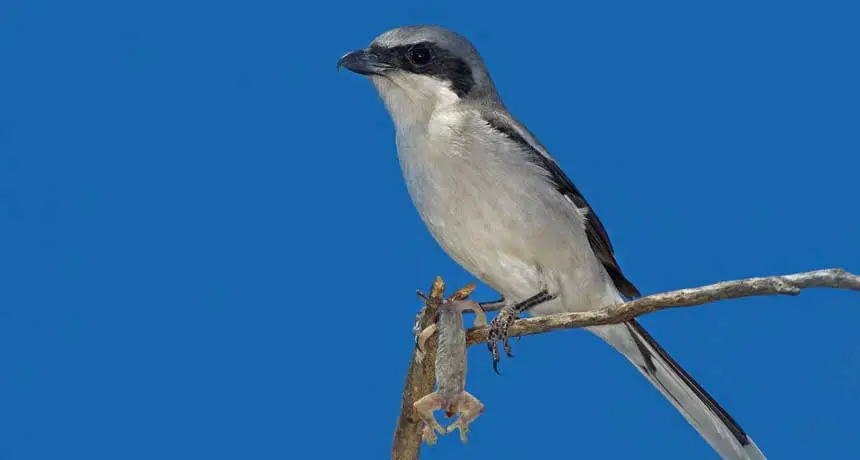These songbirds violently fling and then impale their prey
The loggerhead shrike’s shake might be worse than its bite

MOUSER AND SHAKER In spite of its mild mockingbird looks, a loggerhead shrike on San Clemente Island off the California coast delivers potentially fatal shakings to small vertebrates — such as the dead lizard it now holds.
Daniel W. Clark, U.S. Navy






